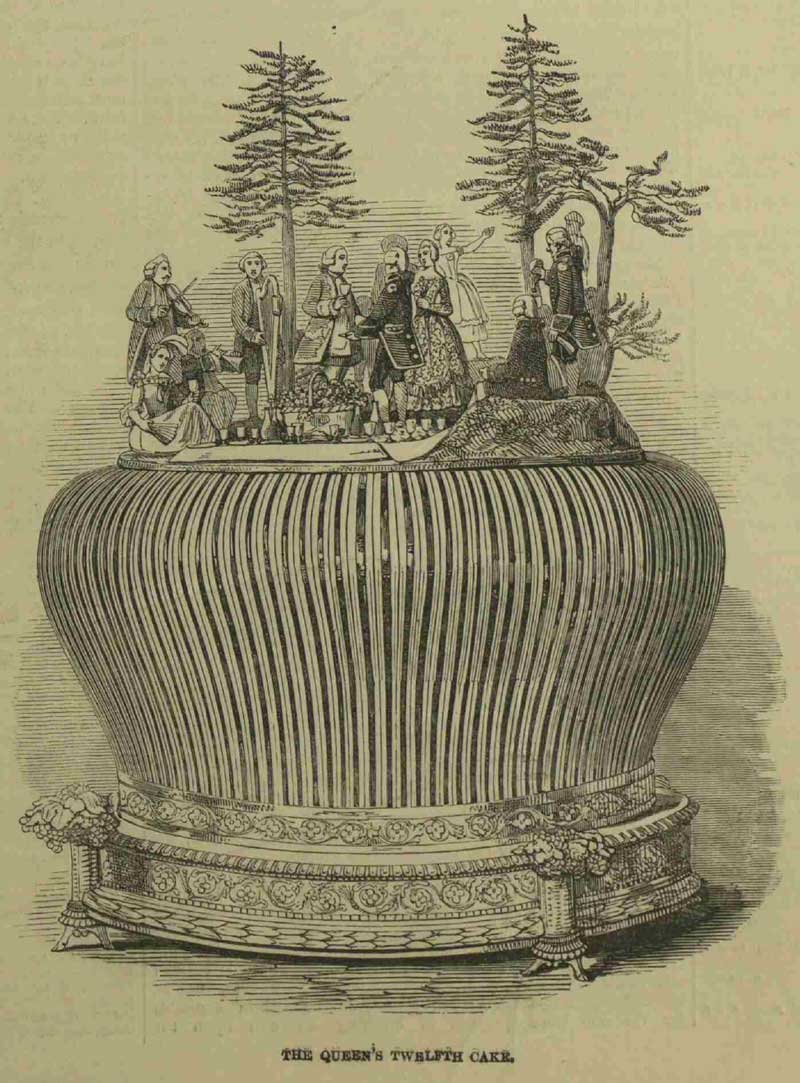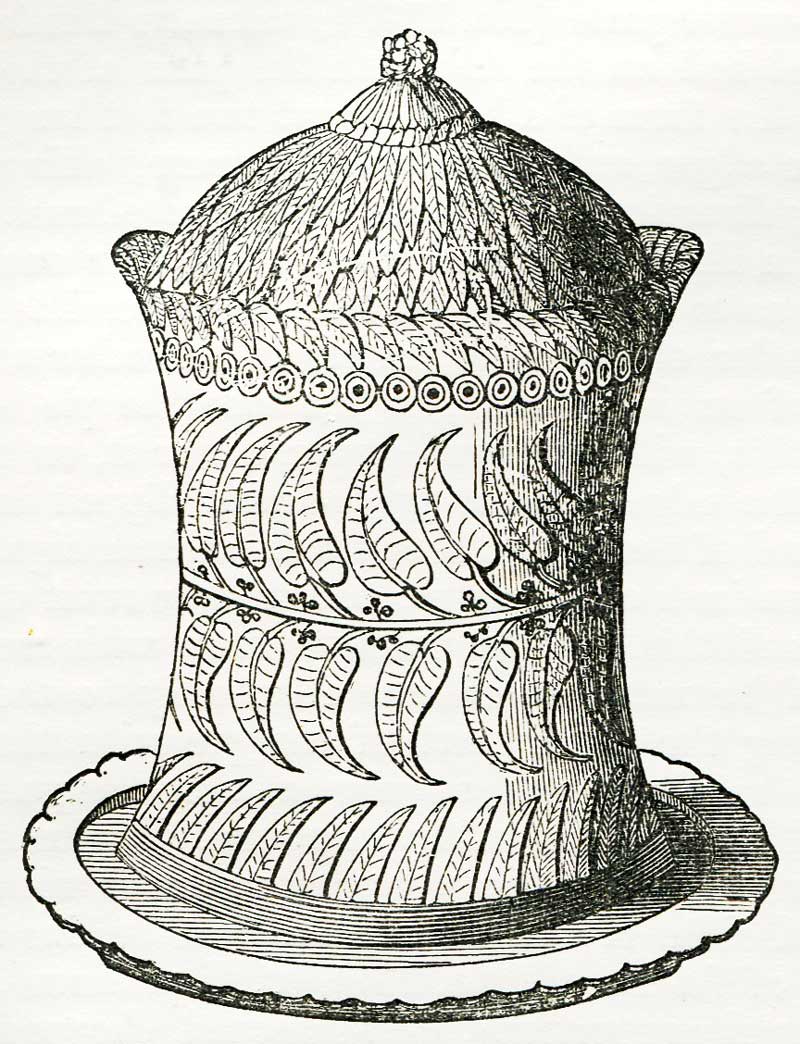I threw a picnic in our garden the other day. We were busy with all…
English Christmas 3 – Food
If we asked what the English eat at Christmas, most probably the majority of us would say turkey and Christmas pudding which would not be far from the truth. However, this is a very simplified version of the menu at Christmas.
What would the English eat in old days? Let’s have a look.
As I mentioned before, people would celebrate Christmas over 12 days until the late Victorian times. Families would come together, relax, play games and sing and people tried to spend a little more money on food, especially meat, vegetables and bakery products, but more importantly on specialties.
Twelfth Cake
One of the most special foods during the Christmas period was the Twelfth Cake, which was consumed on the Twelfth Day, so on 6th January. Today that day is rather sad as this is when we normally pull down the Christmas tree and have to go back to work, but in Victorian days this would be a special day and people were looking forward to it. The tradition had pagan roots, therefore the Church added the Epiphany and this is the reason why twelfth cakes are often decorated with crowns. The cake itself looks like an oversize fruit cake and when I say oversize, I do mean it: two men would carry it on a huge tray. Lots of raisins were used to make the cake, which was then coated in icing. and baked. As a final touch sugar figures were created and painted by the hand. We would not find this very christmasy today as the most popular figures on the cake were dragon, fish, cats and dogs. As the twelfth Cake was the masterpiece of bakeries, bakers paid attention how to display it in the window of their shops so that they could attract more and more Customers.

The Illustrated London News, 1849
Christmas Cake
One could say that Twelfth Cakes was the predecessor of the Christmas Cake and indeed there were similarities such as using raisins and dried fruits and icing. However, the Christmas cake was much smaller, was baked for the two days of Christmas in the late Victorian times. The Christmas Cake was coated with marzipan and royal icing developed by German pastry chefs in the middle of the 19th century. This icing did not require baking which made the process easier. Cakes were decorated with different patterns and tailored and more personal messages – not the usual Merry Christmas one, as in those days it did not exist, in the way it does today.
Yorkshire Christmas Pie
Another popular dish was the Yorkshire Christmas Pie, or Game pie. This originated in Roman times, but had its heydays in the Victorian period. Since the Middle Ages, pies were not only great dishes for guests, but also a good way for the host to show off how rich his estate was. All sorts of meat were used from the estate: partridge, wood pigeon, pheasant, grouse, woodcock, goose duck and turkey which was introduced into England from 1523 from the Americas. In Victorian times, only the richest could afford having this meat pie. Queen Victoria had one every year on the Christmas table which was considered to be a snack in case guests were peckish between the seven courses. 🙂

Mince Pie
The miniature version of the Yorkshire Christmas pie was mince (meat) pie, which perhaps was the best selling product during the Christmas period. Today’s mince pies are sweet, filled with a fruity spicy mix containing raisins and currants, but in the Victorian times it was made with a meat filling and the quality depended on how much money the buyer had. Bakers produced mince pies for the poor which contained tongue, tripe, suet and soot, but they used roast beef for the luxury version. The luxury pies cost 4 times more than the cheap ones. Interestingly, even beer and alcohol was used for making the pies to preserve the meat. In Yorkshire, according to the traditions, eating mince pies every day during the Twelve days of Christmas would bring luck.
Gingerbread
Christmas would not be Christmas without gingerbread. As I mentioned it before, there are lots of German elements in the Anglo-Saxon (English) Christmas. Gingerbread reached England with German transmission in the 19th century, several thousand bakers migrated from Germany to England and this is when the gingerbread spread in England. Of course the popularity of the gingerbread was influenced by the fact that Queen Victoria hung gingerbread ornaments on the Christmas tree which soon became a tradition. These ornaments were not as simple as today, they were quite big and ornate, popular moulds were soldiers, hussars on horses, queens and kings.

Christmas Pudding
Of course the most popular and widely known Christmas dessert is the Christmas pudding, or plum pudding. It has nothing to do with plums, the word “plum”, however meant currents before the 19th century. It is cooked wrapped in a cloth for hours (alternatively called a bag pudding), it contains 13 ingredients symbolising Christ and the 12 apostles, it was not a dessert in old days (this was the way to preserve meat – baking it in alcoholic fruits and dough) but the legend is less known. According to the legend, a king once got lost in a forest and had very little food left. He knocked on the door of a forester to ask for food and accommodation. The forester helped with pleasure, however, he too had very little to eat, therefore they mixed everything they had: suet, flour, sugar, dried currants, eggs, beer and brandy which then they cooked wrapped in a cloth.
Today Christmas pudding is made on the closest Sunday to St Andrew’s Day (30th November) called Stir-up Sunday. According to the tradition stirring the pudding by all family members brings luck. Let me remark here, that even Poirot stirs the Christmas Pudding in the Episode of the Theft of the Royal Ruby. Households used to make 2 puddings, one for Christmas Day and one for New Years Day. It is also a tradition to hide little metal bits in the pudding like thimble or coin. The one who found it was lucky. Like everything in Victorian times, Christmas Pudding was served properly decorated meaning with holly on top and poured brandy on it to light it. Today Christmas pudding is served with brandy butter which is a mix of butter, cream, brandy and sugar. It is incredibly rich and lovely. Even Poirot likes the Christmas pudding, although he has said “the English don’t have dishes only food”.
~
What I really like in the Christmas pudding is its design. I do not think there is anything that would not be available in the form of a Christmas pudding at Christmas. There are earrings, hats, cakes, key rings and several bits and bobs.




Comments (0)